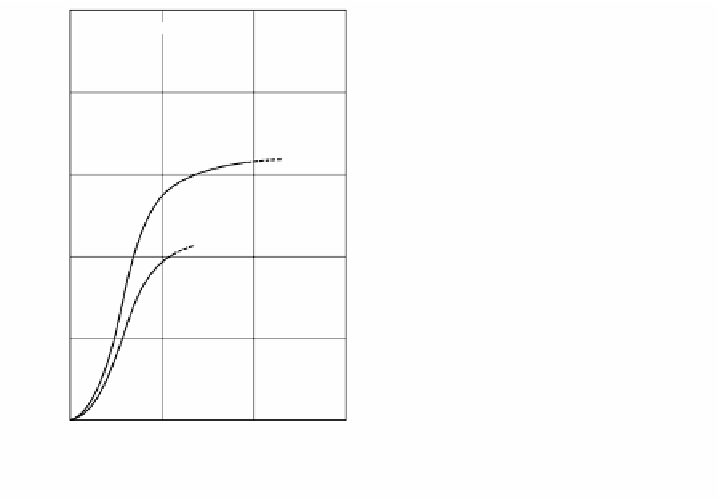Environmental Engineering Reference
In-Depth Information
0.12
Two-dimensional Air Flow
Two-dimensional Air Flow
T =1280K
T =1280K
Yw =0.0008
0.10
0.02
a=40000s
-1
a=1300s
-1
1950K
0.08
a=24000s
-1
a=640s
-1
0.06
1550K
0.01
0.04
a=200s
-1
a=6900s
-1
0.02
1280K
0
0
1000
1500
2000
2500
1000
1500
2000
2500
Surface temperature, K
Surface temperature, K
(a)
(b)
FIGURE 2.135
Influence of the surface temperature on the combustion rate of a solid carbon
in high temperature airflow. The parameter is velocity gradient; (a) for the velocity gradient
at 1300 s
-1
or lower and (b) for the velocity gradient at 6900 s
-1
or higher.
result of thermal expansion reduces the mass flow rate of oxygen transported to the
surface of the carbon when the velocity gradient is kept at the same level.
Analytical study on the influence of the concentration of the oxygen in a high
temperature oxidizing agent on the combustion rate was also conducted. It revealed
that a combustion rate almost equivalent to that in room temperature airflow was
obtained even if the concentration was reduced to the mass rate of approximately
0.085. The test on the formation of a CO flame showed that the combustion rate
may be reduced by half depending on the surface temperature with the velocity
gradient set at about 1000 s
-1
or lower.
REFERENCES
1.
T. Hirano.
Combustion Science
, p. 31. Kaibundo, 1998 (in Japanese).
2.
K. Ito et al.
Trans. of JSME, ser. B
, 56:3508, 1998 (in Japanese).
3.
J. Kojima, Y. Ikeda, and T. Nakasima.
36th Japan Symposium on Combustion
, p. 560,
1998 (in Japanese).
4.
R. Weber et al.
Proceedings of 2nd International Seminar on High Temperature
Combustion in Industrial Furnace
, Stockholm, 2000.
5.
S. Mochida, T. Hasegawa, and R. Tanaka.
AFRC Fall Int. Symp.
, 1993.
6.
A. Sobiesiak, S. Rahbar, and H. A. Becker.
Combust. Flame
, 115:93, 1998.
7.
E. W. Grandmaison et al.
Combust. Flame
, 114:381, 1998.
8.
L. Yimer and B. H. A.
Can. J. Chem. Eng.
, 74:840, 1996.



Search WWH ::

Custom Search